- Gadgets
- A
Single-board computers as routers: new products of 2025 and their capabilities
Single-board computers are increasingly replacing traditional network devices: they are compact, powerful, and flexible. In 2025, the market is full of new products — from the budget NanoPi R3S-LTS for $25 with HDMI and two Gigabit Ethernet ports to the Banana Pi BPI-R4 Pro with Wi-Fi 7 and 10G ports. Today, I will tell you what these and other systems can do, how they are better than regular routers, what operating systems are installed on them, and what they are suitable for. Let’s start!
Single-board computers are increasingly replacing traditional network devices: they are compact, powerful, and flexible. In 2025, the market offers new products — from the budget NanoPi R3S-LTS for $25 with HDMI and two Gigabit Ethernet ports to the Banana Pi BPI-R4 Pro with Wi-Fi 7 and 10G ports. Today, I’ll talk about what these and other systems can do, how they are better than regular routers, which OS they run (OpenWrt, Ubuntu), and what they are used for. Let’s get started!
What the market offers
In this section, we will explore the models available on the market, their key features and capabilities, and whether they are suitable for networking tasks and more.
NanoPi R3S-LTS
NanoPi R3S-LTS is a compact single-board computer from FriendlyELEC. Released in June 2025 as an extension of the NanoPi router line, this new model retains the network orientation of the original but adds multimedia interfaces. Thus, its use cases are now broader — from home gateways to compact media servers and network devices with video output.
The board is built on a quad-core Rockchip RK3566 processor (ARM Cortex-A55, up to 1.8 GHz) with Mali-G52 graphics and a built-in neural processor (1 TOPS). It supports two network interfaces: one is implemented via the RTL8211F controller (Gigabit Ethernet), and the second is via PCIe using the RTL8111H. This allows the board to be used as a router, gateway, network storage, or mini-server with hardware support for traffic filtering and processing.
Technical specifications:
Processor: Rockchip RK3566, 4 cores Cortex-A55 @ 1.8 GHz;
GPU: ARM Mali-G52-2EE;
NPU: up to 1 TOPS;
RAM: 1 or 2 GB LPDDR4;
Storage: microSD, optionally eMMC up to 32 GB;
Network:
1 x Gigabit Ethernet (RTL8211F);
1 x Gigabit Ethernet via PCIe (RTL8111H);
Ports and interfaces:
1 x HDMI 2.0;
1 x USB 3.2 Gen 1 Type-A;
1 x USB Type-C (power only);
1 x MIPI-DSI;
1 x 2-pin audio jack;
1 x 3-pin UART (debug);
1 x RTC;
Additional:
Buttons: Power, User, MaskROM;
LEDs: LAN, WAN, System;
Power: 5 V/2 A via USB-C;
OS support: Ubuntu, Debian, FriendlyWrt, Alpine, Buildroot, OpenMediaVault, Proxmox VE;
Dimensions: 57 × 57 mm.
The board supports a wide range of operating systems: Ubuntu, Debian, FriendlyWrt (based on OpenWrt), OpenMediaVault, Proxmox VE, and others. Configuration options include 1 or 2 GB of LPDDR4 and up to 32 GB of eMMC, with the option to purchase in a metal case. The basic model with 1 GB of RAM starts at $25. The maximum configuration with 2 GB of RAM, 32 GB of eMMC, and a case costs $42.
Orange Pi R2S
Orange Pi R2S is a compact network single-board computer based on the RISC-V architecture, introduced in June 2025. It is smaller than the Raspberry Pi 5 but designed for a completely different purpose: it has no video outputs but features four wired network ports, including two with 2.5 Gbit/s throughput. The device is intended for use as a router, gateway, or home server.
The basis is the octa-core Ky X1 processor with a clock speed of up to 1.6 GHz, Imagination BXE-2-32 graphics, and an integrated NPU (up to 2 TOPS). With two gigabit and two 2.5G Ethernet ports, the board is suitable for tasks that require advanced network connectivity: traffic filtering, network segmentation, internet distribution, VPN or NAS setup.
Technical Specifications:
Processor: Ky X1, 8-core RISC-V, up to 1.6 GHz;
Graphics: Imagination BXE-2-32;
NPU: up to 2 TOPS;
RAM: 2/4/8 GB LPDDR4X;
Main: 8 GB eMMC;
Network Ports:
2 x Gigabit Ethernet;
2 x 2.5 Gigabit Ethernet;
Ports:
1 x USB 3.0 Type-A;
1 x USB 2.0 Type-A;
1 x USB Type-C (power, 5V/3A);
OS: OpenWrt, Ubuntu;
Dimensions: 79 × 46 mm;
Indicators: power and network activity LEDs.
Orange Pi R2S is available in three configurations with 2, 4, or 8 GB LPDDR4X RAM and 8 GB built-in eMMC storage. It supports OpenWrt and Ubuntu OS. There are USB 3.0 and USB 2.0 ports, power is supplied via USB Type-C (5V/3A), and LEDs indicate power and network activity status.
Orange Pi R2S was released in June 2025 and is already available for sale on AliExpress. The base version with 2 GB RAM and 8 GB eMMC costs around 30 $, while models with 4 GB and 8 GB of RAM are priced at approximately 40 $ and 50 $ respectively.
Banana Pi BPI-R4 Pro
Here we have an advanced network single-board computer, introduced in May 2025 as an improved version of the BPI-R4 model. The device is designed for use as a router, gateway, or universal network platform, including support for modems, SSDs, and Wi-Fi/5G modules.
The board is based on the MediaTek Filogic 880 (MT7988) chip, which includes four Cortex-A73 cores with a clock speed of up to 1.8 GHz and built-in Wi-Fi 7 support. The RAM is 8 GB DDR4, and for storage, it has 8 GB eMMC and 256 MB SPI-NAND.
Technical Specifications:
Processor: MediaTek Filogic 880 (MT7988), 4 x Cortex-A73 @ 1.8 GHz;
RAM: 8 GB DDR4;
Main: 8 GB eMMC, 256 MB SPI-NAND;
Network Ports:
1 x WAN 10G (RJ45 or SFP);
1 x LAN 10G (RJ45 or SFP);
4 x LAN 2.5G;
1 x LAN 1G;
1 x LAN 1G via FPC;
Wireless: Built-in Wi-Fi 7;
Expansion:
2 x M.2 2280 M-Key (PCIe 3.0 x1);
3 x M.2 B-Key (PCIe 3.0 x1 or USB 3.2, 5G support, nano SIM);
2 x mini PCIe 3.0 x2;
Other Ports:
USB 3.2;
USB 2.0;
USB Type-C (debugging);
microSD;
2 x 13-pin expansion connectors;
Dimensions: 194 × 132 mm.
The network capabilities of the BPI-R4 Pro are particularly powerful: one WAN and one LAN port can operate at speeds of 10 Gbps (via SFP or RJ45), with four additional ports supporting 2.5 GbE, and two more gigabit Ethernet ports, one of which connects via FPC. Thus, up to seven simultaneous network connections can be used.
This single-board computer is not yet for sale, but there is already a base version of the BPI-R4, which is very similar in specifications (MT7988, Wi-Fi 7, 10 GbE, and 2.5 GbE) and costs around 135–140 $.
NanoPi R76S
A compact yet powerful network single-board computer from FriendlyELEC, introduced in July 2025. It continues the NanoPi router board line and offers a significant performance boost compared to the recent R3S-LTS model. The R76S features a more powerful processor, supports up to 16 GB of RAM, and has two 2.5G Ethernet ports.
The board is powered by the octa-core Rockchip RK3576 chip with four Cortex-A72 cores (up to 2.2 GHz) and four Cortex-A53 cores (up to 2.0 GHz), Mali-G52 MC3 graphics, and an NPU performance of up to 6 TOPS. This makes it suitable for routers, NAS, video streaming, DPI systems, and AI-assisted traffic analysis.
Specifications:
Processor: Rockchip RK3576 (4 x Cortex-A72 @ 2.2 GHz + 4 x Cortex-A53 @ 2.0 GHz);
Graphics: Mali-G52 MC3;
NPU: up to 6 TOPS;
RAM: 2, 4, or 16 GB (LPDDR4X or LPDDR5, depending on version);
Storage: 32 GB eMMC, microSD (UHS-I);
Network ports:
2 x 2.5 Gigabit Ethernet (RTL8125BG);
1 x M.2 SDIO (optional Wi-Fi/BT module);
Ports and interfaces:
1 x USB 3.2 Gen 1 Type-A;
1 x USB-C (power only);
HDMI 2.0;
3-pin UART, 8-pin GPIO, RTC connector;
Buttons: Power, User, Mask (eMMC flashing);
LED indicators: 3;
OS support: Android 14, Debian, Ubuntu, Alpine, Buildroot, Proxmox VE, OpenMediaVault, FriendlyWrt;
Dimensions: 58 × 58 mm.
The NanoPi R76S was released in July 2025 and is already available. Prices range from $49 for the 2 GB RAM model to $89 for the version with 16 GB RAM and 32 GB eMMC. Versions with a metal case and optional Wi-Fi module are also available.
Banana Pi BPI-WiFi6 Mini
A single-board computer for building your own Wi-Fi router. It is based on the same chipset as the full-size BPI-WiFi 6 but is in a smaller form factor (65 × 65 mm). The board is focused on wireless connectivity but also supports 4G/5G mobile networks through a separate modem.
It is equipped with a dual-core ARM Cortex-A9 processor, the Triductor TR6560, clocked at 1.2 GHz, and the TR5220 wireless module supporting Wi-Fi 6. For wired connections, there are two Gigabit Ethernet ports (WAN and LAN), but the focus here is on wireless data transfer: there is an M.2 B-Key slot and a nanoSIM card reader for connecting a 4G or 5G modem (e.g., Quectel RM500U).
Specifications:
Processor: Triductor TR6560, 2 x Cortex-A9 @ 1.2 GHz;
Wireless module: TR5220, supports Wi-Fi 6;
RAM: 128 MB DDR3;
Storage: 128 MB SPI NAND;
Network interfaces:
1 x Gigabit Ethernet WAN;
1 x Gigabit Ethernet LAN;
1 x M.2 B-Key slot + nano SIM (4G/5G);
Ports:
1 x USB 3.0 Type-C (power);
1 x USB 3.0 Type-A;
Other connectors: 2.4/5 GHz antenna interfaces, UART, fan;
Compatibility: with cases from BPI-R3 Mini;
Dimensions: 65 × 65 mm;
OS support: OpenWrt and other Linux distributions (according to community information).
There is not much RAM — 128 MB DDR3, and the same amount of SPI NAND flash memory, but for a router with OpenWrt or similar systems, this may be enough. Power is supplied via USB Type-C, and there is one USB 3.0 Type-A port for connecting devices. There are also interfaces for antennas, debugging via UART, and a connector for a cooler. It is sold for about 30 $.
Advantages and Disadvantages
Unlike "classic" devices, single-board computers (SBCs) provide a full-fledged computing platform. This allows you to install various operating systems and configure them for specific tasks — from a simple router to complex network solutions. But there are other differences:
Software Flexibility. Classic routers usually run proprietary firmware (such as from TP-Link or ASUS) with a limited set of features. SBCs, however, support a wide range of OSes like OpenWrt, Ubuntu, Debian, or specialized distributions, giving the user full control over the device. You can configure routing, VPN, firewalls, or even run a web server.
For example, boards like the Orange Pi R2S or Banana Pi BPI-WiFi6 Mini are often used for routing because they work reliably with OpenWrt and support features like VPN, VLAN, and QoS. More powerful models, such as the NanoPi R76S or BPI-R4 Pro, support 2.5G and 10G Ethernet ports, and when connecting an SSD via M.2, they can be turned into full-fledged NAS systems with OpenMediaVault.
Hardware Versatility. Traditional routers usually have only network ports and Wi-Fi modules, while SBCs come with additional interfaces: USB, HDMI, GPIO, M.2, or PCIe slots. This allows you to connect external drives, 4G/5G modems, displays, or even use the board for multimedia tasks. For example, the NanoPi R3S-LTS has an HDMI port, making it suitable for outputting images, something you won’t find on a standard router.
Price and Availability. Although top models like the Banana Pi BPI-R4 Pro can cost around 135–140 $, budget options such as the NanoPi R3S-LTS or Orange Pi R2S start at 25–30 $, often cheaper than traditional routers with similar networking capabilities.
Performance and Customization. SBCs like the NanoPi R76S with 16 GB of RAM and a 6 TOPS NPU offer computing power comparable to a mini-PC, enabling tasks that are inaccessible to most routers, such as traffic analysis with AI or running virtual machines through Proxmox VE.
These boards can also be used as VPN servers, gateways, or smart home hubs. Support for Home Assistant on Ubuntu, FriendlyWrt, or Android makes them a convenient base for automation. Some models like the R76S with a 6 TOPS neural processor even allow running network analysis with AI elements. Plus, thanks to support for Proxmox VE, Alpine, and Buildroot, they can easily turn into miniature servers for virtualization or IoT.
Of course, there are also disadvantages. For example, SBCs often require more time for setup, as the user installs and configures the OS themselves, unlike routers with ready-made firmware. They may also consume more power and generate more heat, which requires careful consideration of cooling, especially for models like the Banana Pi BPI-R4 Pro.
If you have experience using such single-board computers, write in the comments — let's discuss.
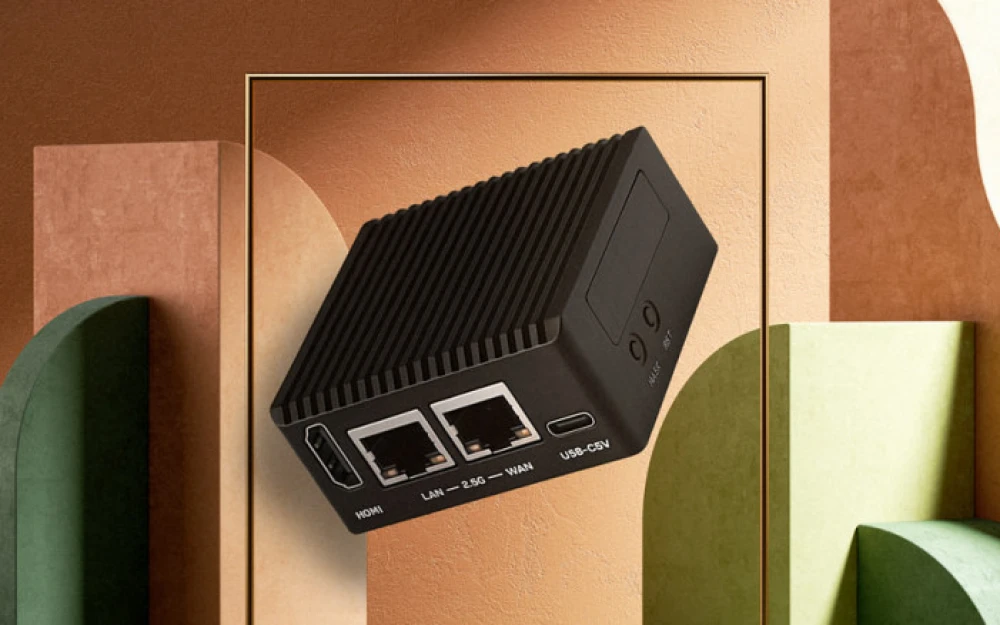

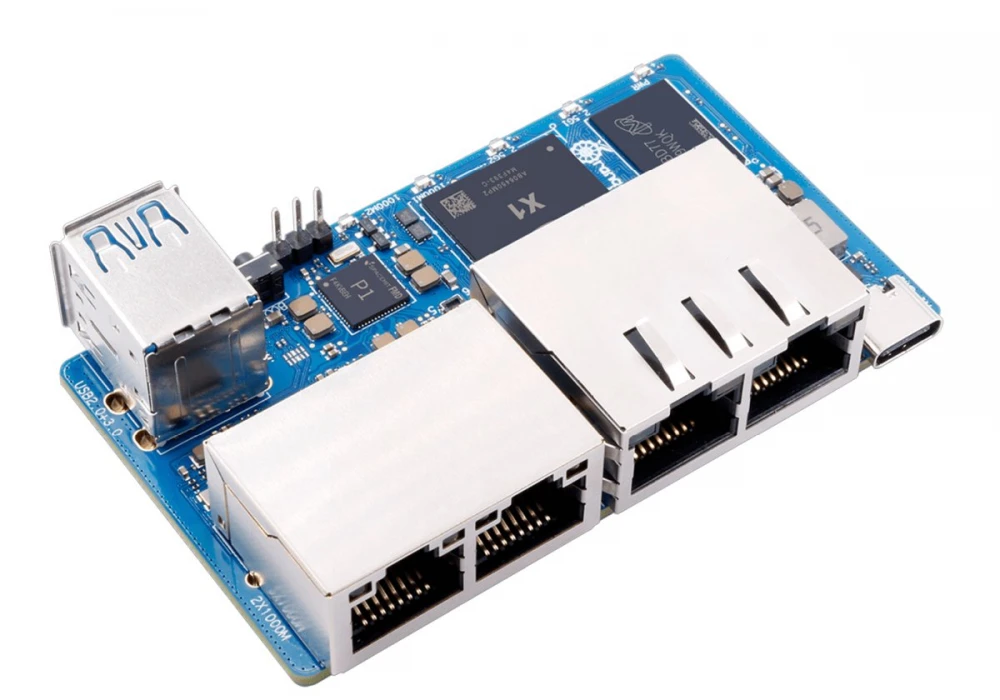
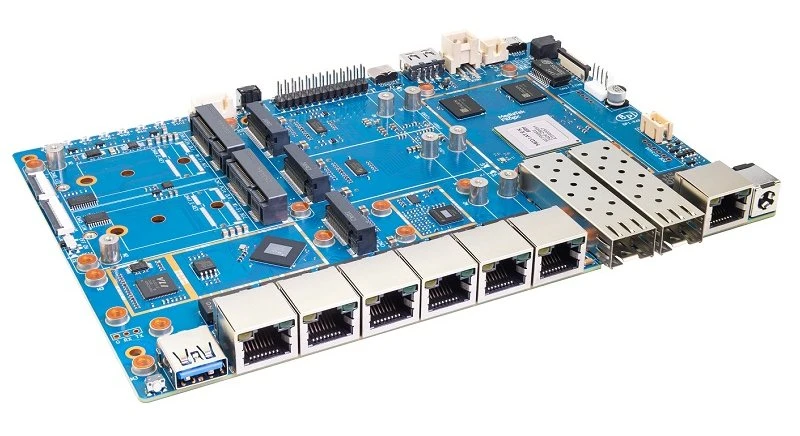

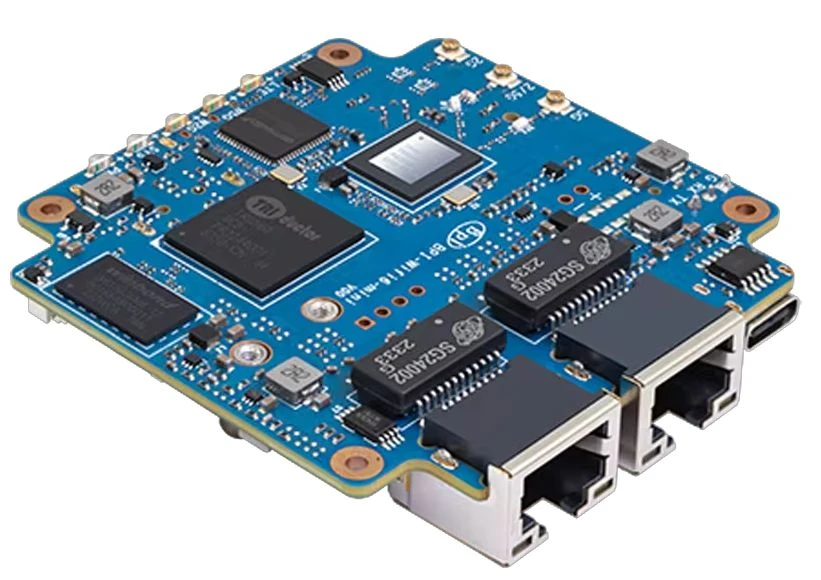



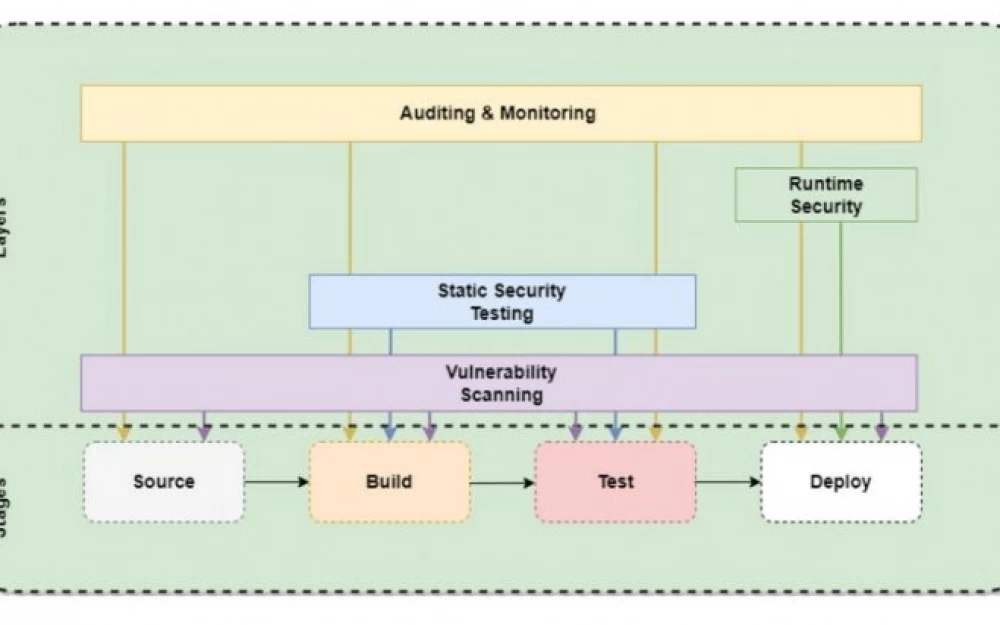





Write comment